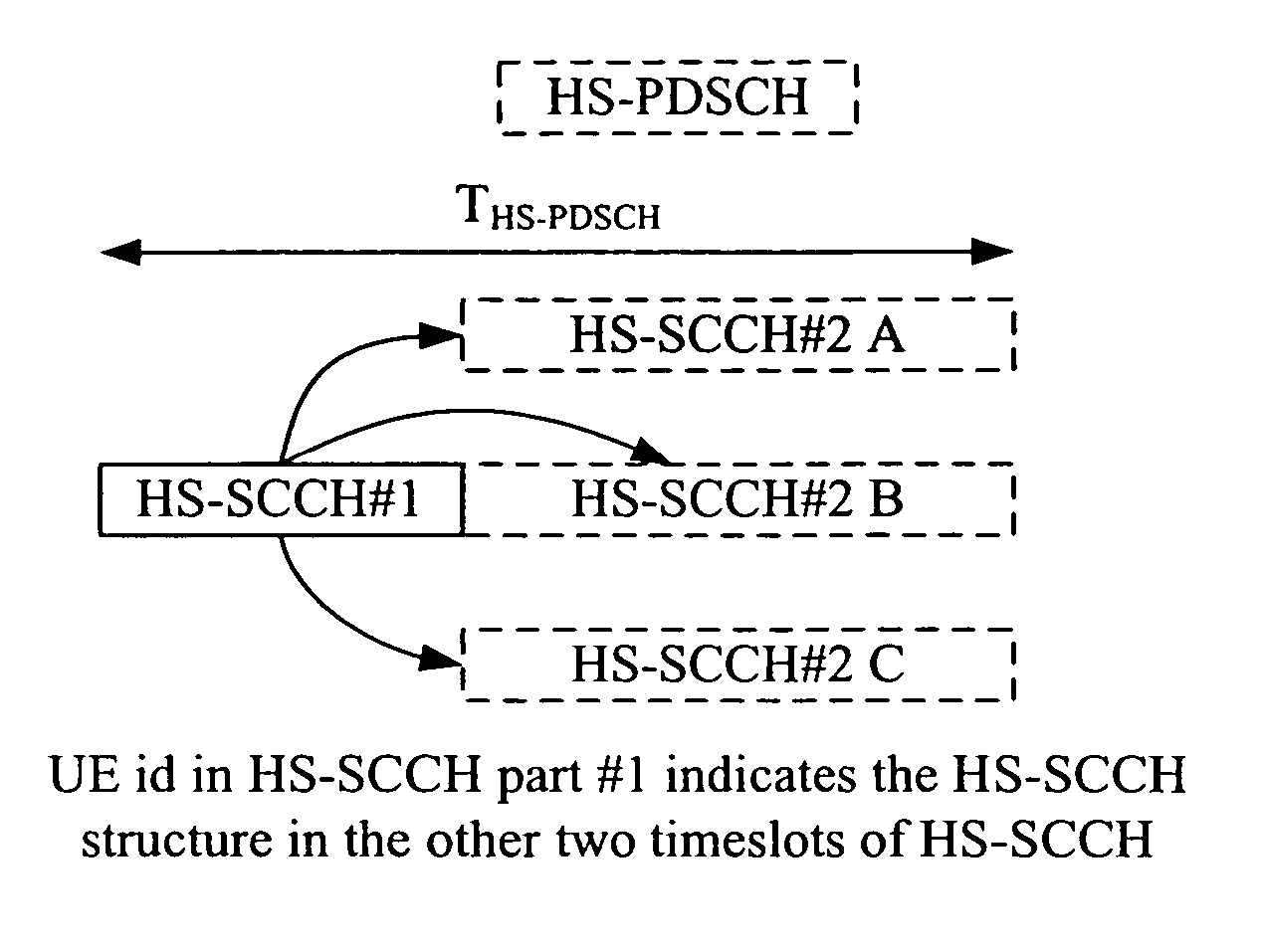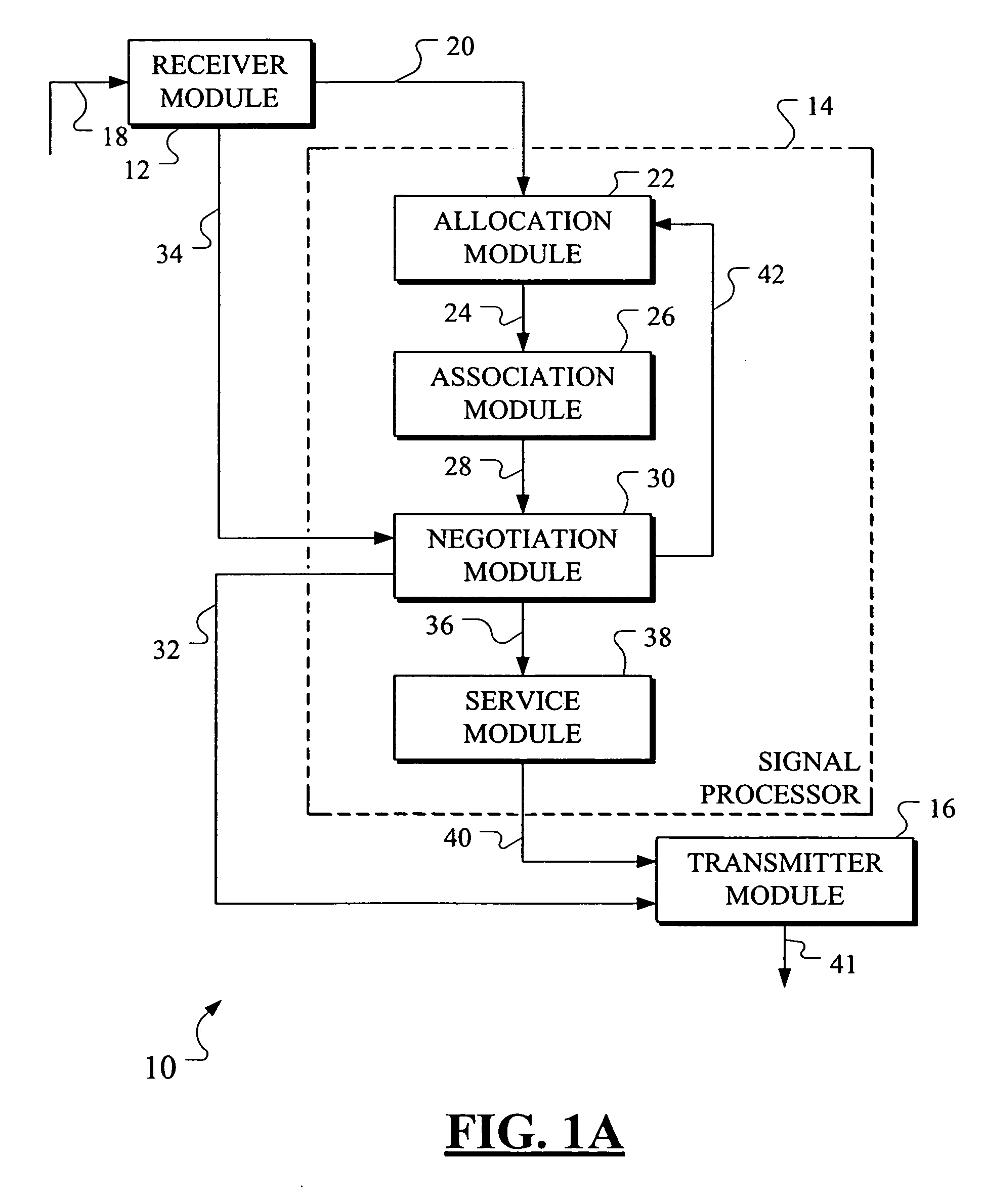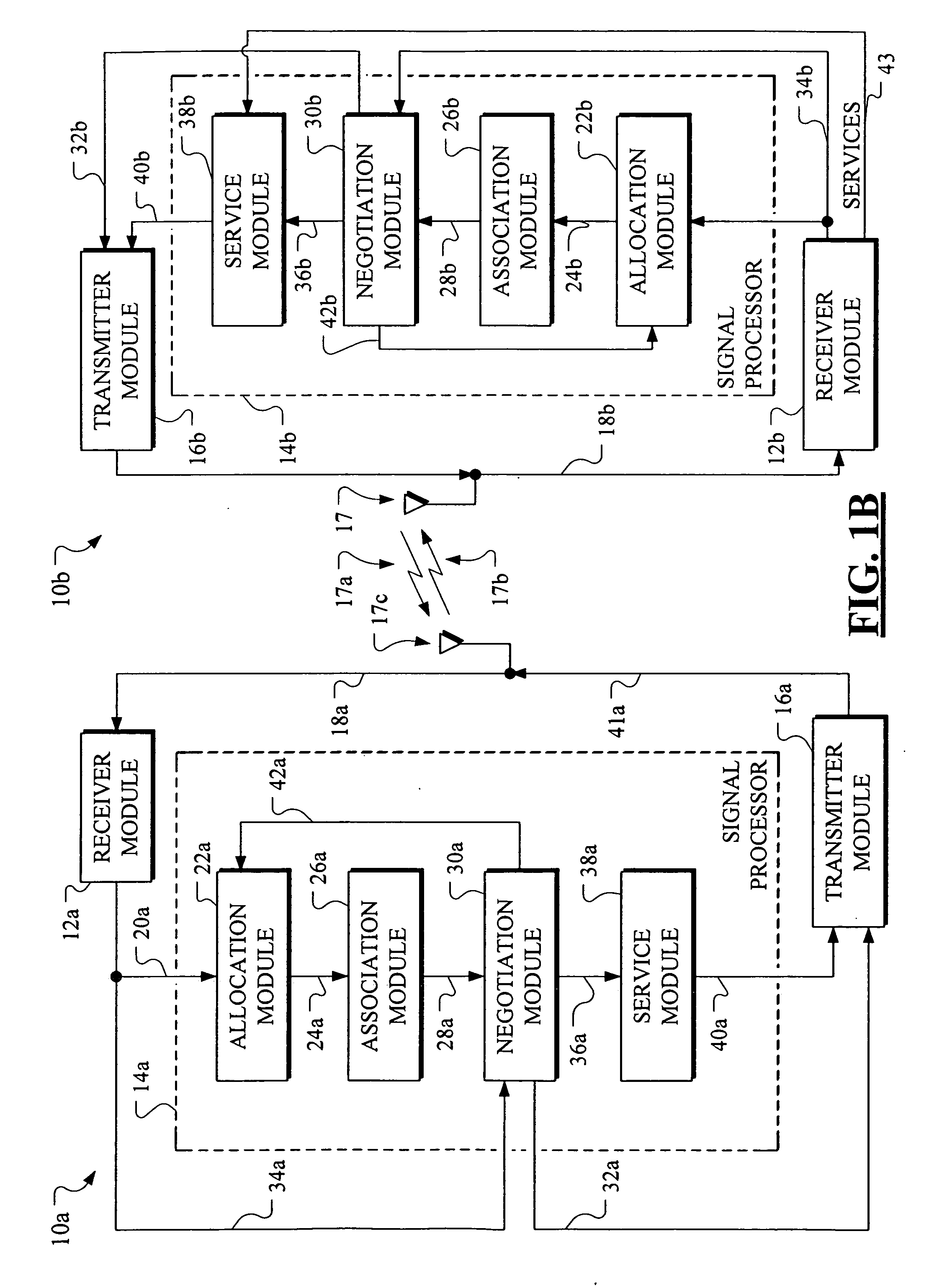Expanded signalling capability for network element, user equipment and system
a network element and user equipment technology, applied in the field of mobile communications, can solve the problems of not having multi-carrier solutions, wcdma deployment plans do not provide a signalling scheme/signal structure, and ue knowing which hs-scch structur
- Summary
- Abstract
- Description
- Claims
- Application Information
AI Technical Summary
Problems solved by technology
Method used
Image
Examples
Embodiment Construction
[0029] In the 3GPP WCDMA system the base station (Node B) is a network element that sends signalling (control) information on four different high speed shared control channels (HS-SCCHs) although more than four are possible. The HS-SCCHs are sent in parallel during the same recurring time interval, e.g., during a two millisecond transmission time interval (TTI). The HS-SCCHs are sent over the whole cell or parts thereof for monitoring by various user equipment (UEs) which may be present in the cell. During this time that UEs are sending back periodic (for instance every ten milliseconds) channel quality indicator (CQI) signals to the Node B. The control information for a given UE, according to the prior art, is contained in one and only one of the four parallel HS-SCCHs. If a UE is able to check all four HS-SCCHs, it tries to find the HS-SCCH intended for it by checking its UE identifier in one of the four possible channels. When it detects the UE ID unique to itself in the first pa...
PUM
 Login to View More
Login to View More Abstract
Description
Claims
Application Information
 Login to View More
Login to View More - Generate Ideas
- Intellectual Property
- Life Sciences
- Materials
- Tech Scout
- Unparalleled Data Quality
- Higher Quality Content
- 60% Fewer Hallucinations
Browse by: Latest US Patents, China's latest patents, Technical Efficacy Thesaurus, Application Domain, Technology Topic, Popular Technical Reports.
© 2025 PatSnap. All rights reserved.Legal|Privacy policy|Modern Slavery Act Transparency Statement|Sitemap|About US| Contact US: help@patsnap.com



